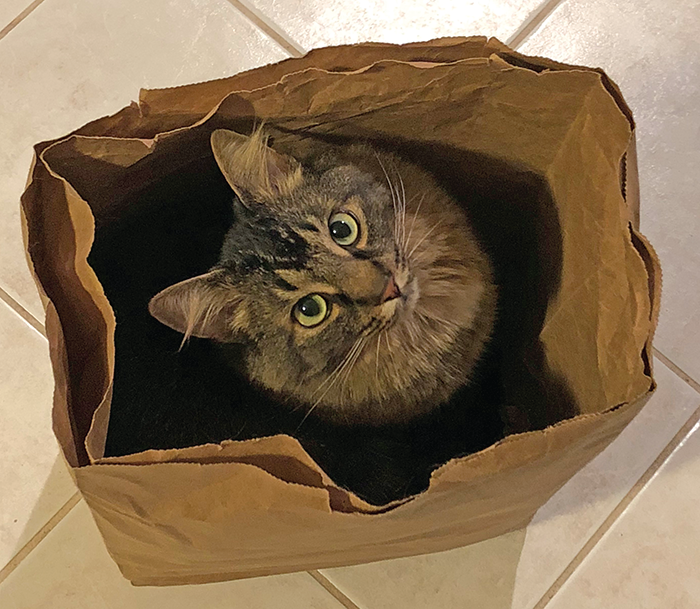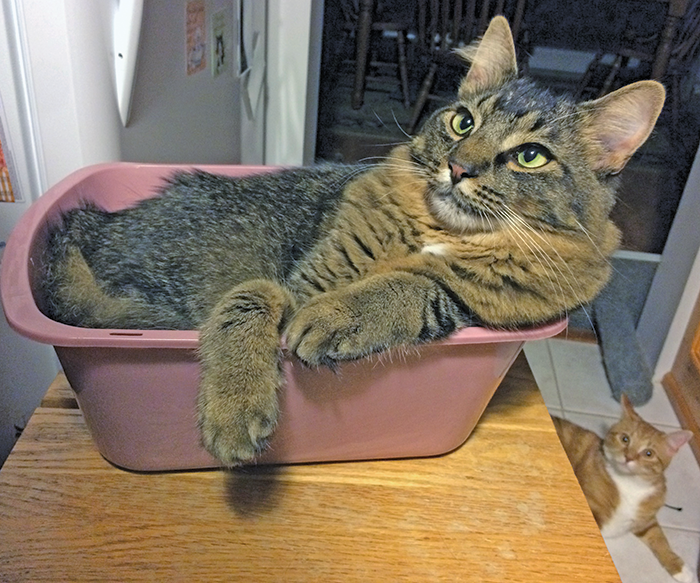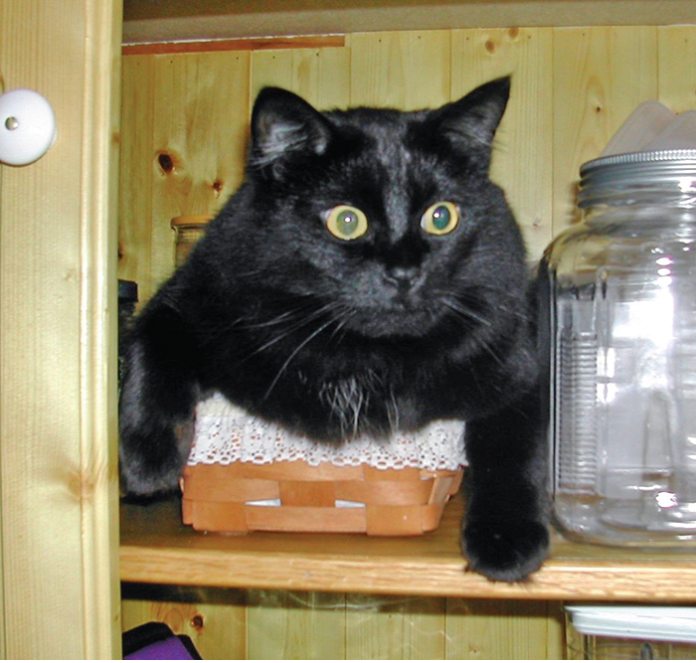Cats have a talent for disappearing, especially when we need to give a medication or take them somewhere. As frustrating as this can be, hiding is a basic survival technique.
Why Cats Hide
Although domestic cats have been living in harmony with humans for many years, they still have natural instincts that are necessary for survival in the wild. Hunkering down in a small space gives your cat shelter from potential predators, allowing him to eat or sleep without needing to watch his back.
“Cats like small spaces because they are quiet, less chaotic, and away from potential external threats,” says Pamela J. Perry, DVM, PhD, Cornell ACVB Behavior Resident. “It is also possible that tight spaces remind a cat of his/her nest (the place where he/she was born). These small secluded areas help cats feel more secure as well as provide them with warmth and comfort.”
Pay attention to your cat’s favorite spots and consider the strategic advantages of each one. For example, a cat tree provides a great lookout. The pillow at the head of your bed is both comfortable and up against a solid structure, minimizing the directions from which someone can sneak up on him.
Cats also hide when they are sick, likely for the sense of security, like us curling up in a thick, cozy blanket on the couch. When cats don’t feel great, they want to alleviate that discomfort. As you probably know, cats are stoic, and often the only sign that something is wrong is that the cat is hiding more than usual.

Photography Photo courtesy Dr. Perry
Favorite Spots
Prime hiding spots are small enough for a cat to fit into but too small for potential predators. They often have some sort of wall to provide cover and are dark enough to make it harder for a predator to see while capitalizing on the cat’s excellent night vision.
“Cats are ingenious when it comes to hiding,” says Dr. Perry. “Some common areas include inside closets or cabinets, under furniture, on top of a bookcase, behind the refrigerator, and even inside a box-spring mattress.”
Cats have been found behind pipes under the sink. This spot can be extra sneaky, as small cats can tuck themselves up on top of/behind the bending pipes. Closets add multiple levels of dark, secure hiding places (back corners, shelving).
Laundry baskets are cozy, confined, and may smell like you or be warm due to clothes recently removed from the dryer. Boxes can be a favorite toy and hiding place for cats. If your cat has a particular affinity for boxes, always check to be sure they’re empty before storing or recycling.
Cats naturally like to climb for both security and a better view, so Christmas trees are a dream playground (avoid fragile ornaments!). Large indoor plants also make good hiding spots. We recommend checking that plants aren’t poisonous (https://tinyurl.com/FelineHealthCenterPoisons) before adding any to your house.
Attics and basements don’t get much traffic, so they’re quiet. Plus, they often contain lots of boxes and extra furniture among which to hide.
“Keeping a closet open with some bedding tucked inside may entice a cat to use the space,” says Dr. Perry. “Often a cardboard box will suffice for meeting the cat’s need for hiding. Leaving a cat carrier open with bedding inside not only provides a comfortable resting area, but also allows the cat to become comfortable with the carrier,” she says.

Photography Photo courtesy Dr. Perry
Finding Your Cat
Teach your cat a basic recall by always calling him for mealtimes, treats, and/or playtime, so he associates your call with positive experiences. Then, when you need to find him quickly, call him the same way and he is likely to respond.
If you still can’t find your cat, systematically search your house. Use a flashlight in dark areas. Even if you don’t notice your cat’s body, his eyes may reflect the light. And don’t forget to look up! “If the search is futile, then owners should look inside cupboards, closets, drawers, and the washing machine and dryer,” says Dr. Perry.
Mealtime Security
Humans are social eaters, so we tend to line our cats’ food bowls up next to each other in the same room. This works with some cats, but not all. If you have several cats and they don’t always get along, you may notice that the cat lower on the totem pole eats less or tries to angle himself so that he can see if another cat approaches while he eats. Separating the bowls into different rooms and potentially putting them higher up will help cats lower in the pecking order to feel more secure while eating.




